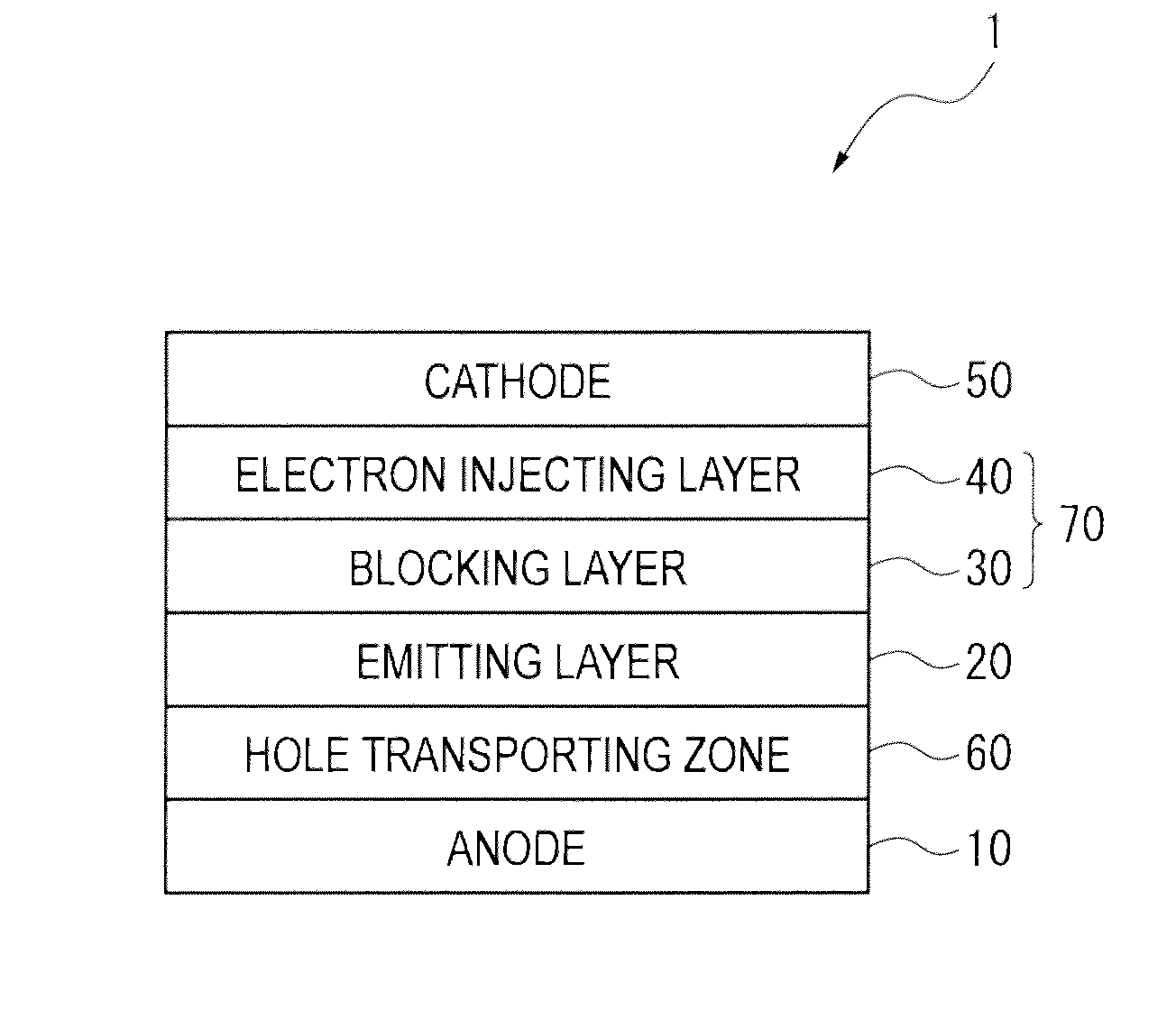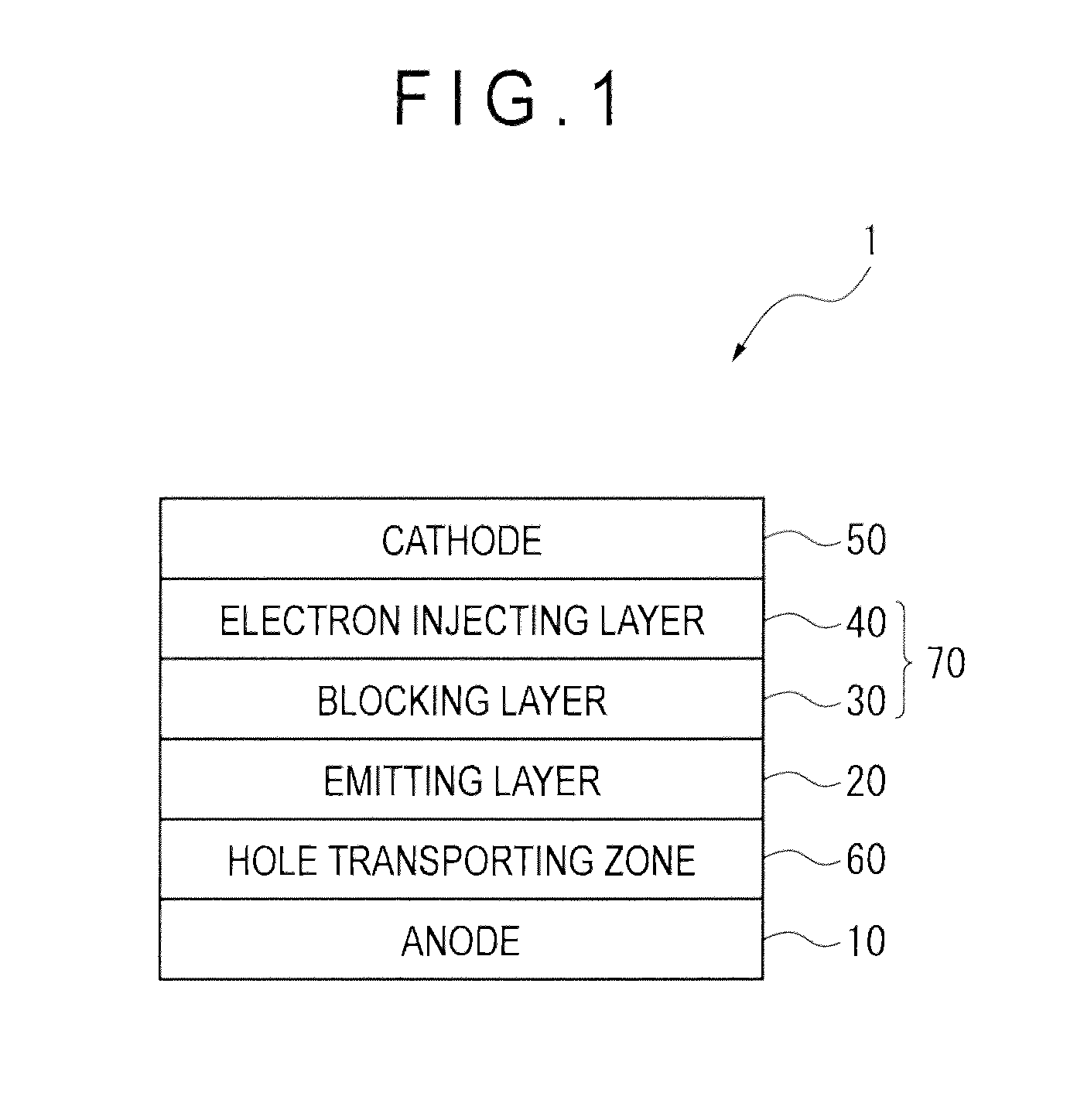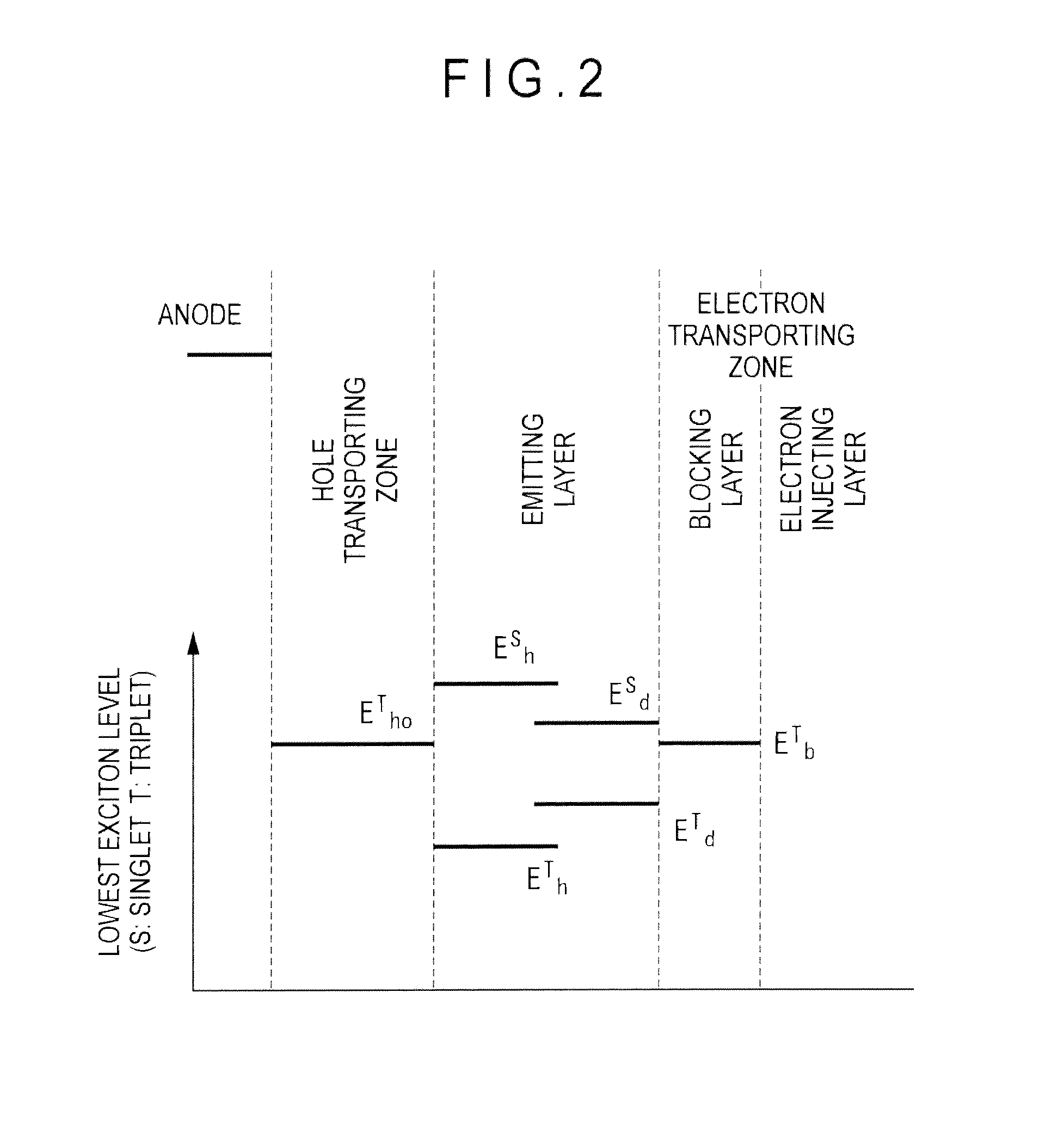Organic electroluminescence device
a technology of electroluminescence and organs, which is applied in the direction of thermoelectric device junction materials, semiconductor devices, electrical apparatus, etc., can solve the problems of insufficient cathode supply and energy barrier preventing the generation of excitons, and achieve the effect of high efficiency
- Summary
- Abstract
- Description
- Claims
- Application Information
AI Technical Summary
Benefits of technology
Problems solved by technology
Method used
Image
Examples
first exemplary embodiment
[0061]The invention utilizes a TTF phenomenon. The TTF phenomenon will be initially explained below.
[0062]Holes and electrons respectively injected from an anode and a cathode are recombined in an emitting layer to generate excitons. As for the spin state, as is conventionally known, singlet excitons account for 25% and triplet excitons account for 75%. In a conventionally known fluorescent device, light is emitted when singlet excitons of 25% are relaxed to the ground state. The remaining triplet excitons of 75% are returned to the ground state without emitting light through a thermal deactivation process. Accordingly, the theoretical limit value of the internal quantum efficiency of a conventional fluorescent device is believed to be 25%.
[0063]The behavior of triplet excitons generated within an organic substance has been theoretically examined. According to S. M. Bachilo et al. (J. Phys. Chem. A, 104, 7711 (2000)), assuming that high-order excitons such as quintet excitons are qu...
second exemplary embodiment
[0333]An organic EL device according to a second exemplary embodiment will be described below.
[0334]The organic EL device according to the second exemplary embodiment has a blocking layer different from that of the organic EL device according to the first exemplary embodiment. Specifically, whereas the aromatic heterocyclic derivative contained in the blocking layer of the organic EL device according to the first exemplary embodiment has the relationship of affinity represented by the formula (1) in relation to the host of the emitting layer, the blocking layer of the organic EL device according to the second exemplary embodiment contains an aromatic heterocyclic derivative having an azine ring and does not necessarily require to satisfy the relationship of the formula (1). In this point, the organic EL devices according to the first and second exemplary embodiments are different. As for other points, the organic EL device according to the second exemplary embodiment is the same as ...
third exemplary embodiment
[0346]The device of the invention may have a tandem device configuration in which at least two organic layer units including emitting layers are provided. An intermediate layer (intermediate conductive layer, charge generation layer or CGL) is interposed between the two emitting layers. An electron transporting zone can be provided in each unit. At least one emitting layer is a fluorescent emitting layer and the unit including the emitting layer satisfies the above-mentioned requirements. Specific examples of stack order are given below. The following emitting layer may be a multilayer stack of emitting layers or one organic layer unit including a charge blocking layer according to a later-described third exemplary embodiment.
[0347]anode / fluoresecent emitting layer / intermediate layer / fluoresecent emitting layer / blocking layer / electron injecting layer / cathode.
[0348]anode / fluoresecent emitting layer / blocking layer / electron injecting layer / intermediate layer / fluoresecent emitting layer...
PUM
 Login to View More
Login to View More Abstract
Description
Claims
Application Information
 Login to View More
Login to View More - R&D
- Intellectual Property
- Life Sciences
- Materials
- Tech Scout
- Unparalleled Data Quality
- Higher Quality Content
- 60% Fewer Hallucinations
Browse by: Latest US Patents, China's latest patents, Technical Efficacy Thesaurus, Application Domain, Technology Topic, Popular Technical Reports.
© 2025 PatSnap. All rights reserved.Legal|Privacy policy|Modern Slavery Act Transparency Statement|Sitemap|About US| Contact US: help@patsnap.com



